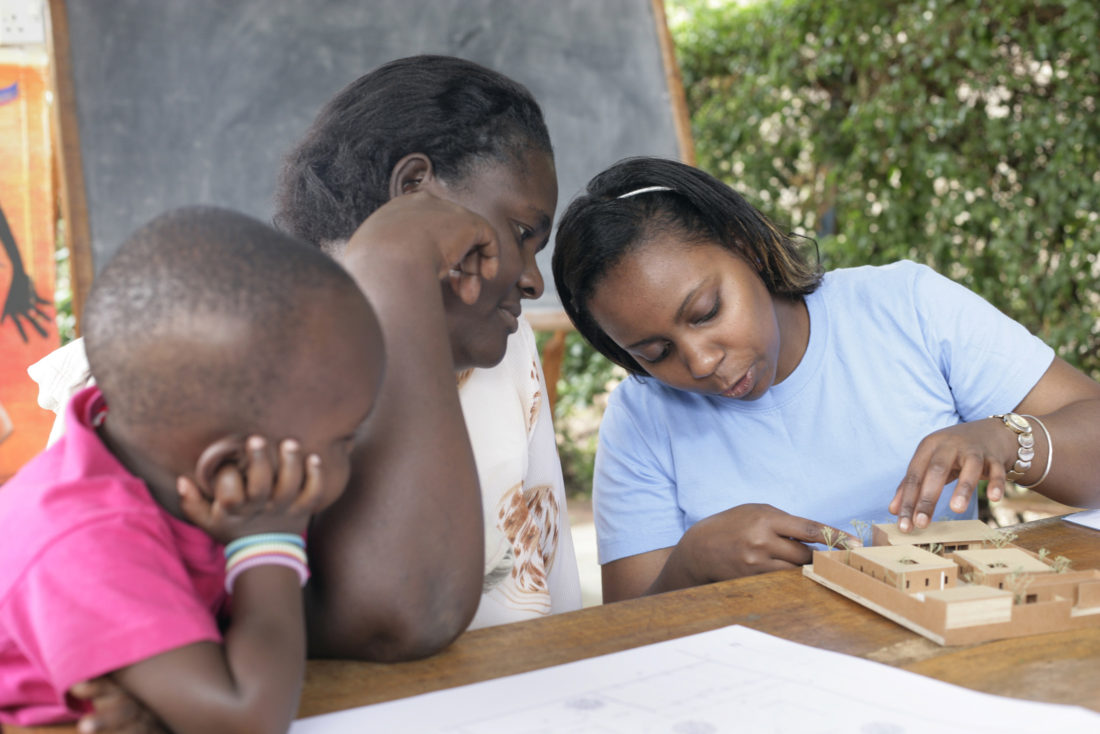I have a penchant for Africa-centric do gooders. Particularly those who somehow manage to merge both development and design into their daily work. Finnish firm Hollmén Reuter Sandman Architects is my latest such discovery. I was made aware of their work from a Facebook page fan (talk to me folks, I listen!) and immediately had to know everything about the company’s work. One of the head designers, Jenni Reuter took some time out during her recent trip to supervise a project in Moshi, Tanzania to tell me the who, what, when, why and how of Ukumbi, the NGO that spearheads their design activities in Africa.
ME: Your NGO is said to employ local and traditional architectural techniques. What techniques did you most appreciate from your projects in Africa?
JR: “Depending on the region, we have employed different techniques. In the Women’s Center project in Rufisque, Senegal we used for example a local straw mat as a ceiling but combined it with corrugated iron as a roofing material with a ventilated gap in between. This was a new combination of traditional materials that worked out very well. For our A.P.E. project in Cairo, Egypt we designed walls of local stone as well as wooden mashrabeyas in front of the windows. Egypt is scarce of hard wood so the mashrabeyas will be built in either a new material made of recycled wood or of palm tree, a tree which grows quickly but that is not used much because of its long fibers.

ME: Although your projects span the globe, you gave the NGO the Swahili name Ukumbi. Why?
JR: “Ukumbi means a forum, veranda or a meeting place for dialogue and interaction. When we founded our NGO we were working on the TunaHAKI project in Moshi, Tanzania. We wanted a name that functioned in many languages and liked the meaning of Ukumbi.”


ME: There is a project in Kigali, Rwanda that is on hold for several reasons and you are unsure that it will continue. You are now experiencing some challenges with your Egypt project which began in 2010, the year before the Arab Spring. How has the Egypt project been affected by political impasse there?
JR: “We were supposed to get the building permit just a couple of weeks after the revolution started but because of the unsure situation we are still waiting for the building permit and we have not started construction yet. Our local partner however, the NGO Association for the Protection of the Environment (APE) is still very positive that it will happen.”

ME: One of your very first Ukumbi projects was in Senegal and thereafter mainly in non-francophone countries. Is there a contrast between working in East versus West Africa?
JR: “Africa is a huge continent and every country and region has got its own culture and specialties. But for me personally, one thing you experience much more strongly in the Western parts of Africa than in the Eastern parts is the local music and dances.”
ME: Your latest project, the KWIECO shelter in Moshi, Tanzania wants to go green by investing in solar panels. In what other ways do you see the future architecture in Africa going green?
JR: “Things such as solar panels, rainwater harvesting and solar water heaters have come rather late to Africa. We think that one of the reasons for us to work in Africa is to show that ecological solutions are good investments in the built environment. In many African countries, even recycling is still considered something for the extremely poor and immediately when you get a bit of money you are not willing to recycle anymore. We would like to show that recycling and ecological solutions can be both beautiful and functional.”




